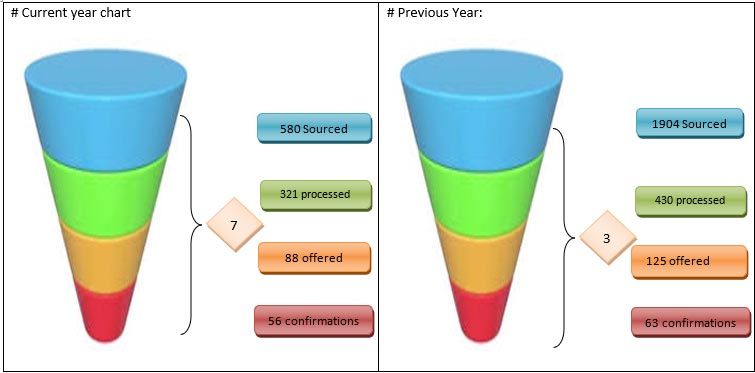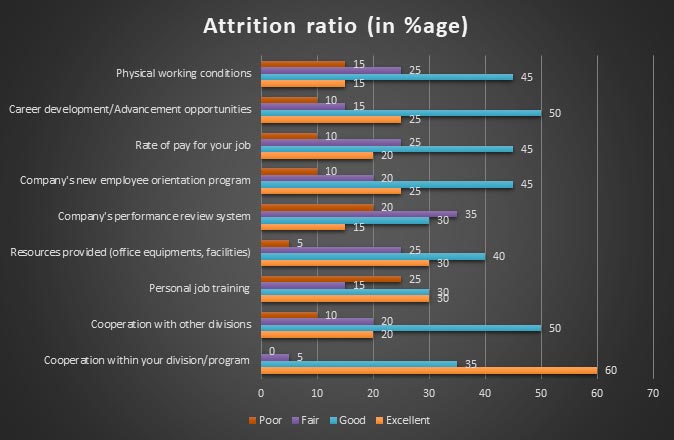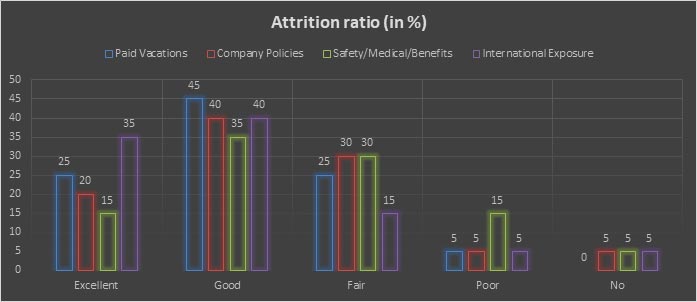Marc Andreessen, had this to say when he was asked, “When is the right time for a company to hire somebody in the HR function? Is it at a certain revenue level? Is it for a certain number of people?”
He is a famous Silicon Valley entrepreneur and investor who has seen quite a few successful startups in various stages from ideation through growth/scale to maturity. And in his opinion “It’s somewhere between 50 to 150 people. It’s somewhere in there.”
My goals aligned with Streebo:
I joined Streebo when the employee strength was 60 and it was already an IBM Premium Business Partner. The top management seemed to have a pretty good grip on things as far as the strategy and planning was concerned. Now that we have reached a strength of 200+ it goes to say that the strategies and plans have been working and the company has been doing great.
I joined Streebo at a very exciting juncture in its journey, and the work here has given me a chance to explore various aspects of my role here as a Global HR consultant. Getting into the team of Human Resource was huge. I got to interact with the top brass, the managers and the technical staff in my initial days. It gave me an idea about the goals and aspirations of the company. I understood the range of my responsibilities. I also got to gauge the right benchmark for the talent which Streebo needed, to advance to the next level.
Inner workings, processes and streamlining:
Seamless and efficient HR function is an essential ingredient in the success story of a company in growth mode. To achieve this goal, I have consistently worked on improving my knowledge about best practices in HR as well as that of the key processes in HR, keeping the day-to-day operations as optimized as possible, keeping efficiency a top priority, deploying processes which I formulated and refined in my previous stints as an HR consultant. This is a continuous effort, and I enjoy its nitty-gritty.
From the very first day, I started studying the previous year’s hiring patterns across all levels, especially direct hiring. I noticed the whole process was scattered. Despite having all the resources, the sourcing and selection process wasn’t at par. I saw that it was imperative to streamline the hiring process – both for Freshers and the experienced candidates. There were no log or record of potentially important candidate-specific data. So, we started to log a short and crisp categorized record for the experienced candidates.
The data gathered during screening was used to hire Freshers. Taking a step further, we started speaking with the technical team about the technical knowledge required and used this information to source technical and niche skills. We mapped the market for specialized IBM skills, and Chatbot development skills, which the company was looking for, at the time. It helped us to get the right candidates for an immediate requirement, moreover, the candidate database which we formed was helpful for future requirements as well. The right approach, HR metrics, and HR analytics: –
More and more HR leaders in the world are now looking towards quantifiable data to achieve better results: anticipating and fulfilling their talent needs, understanding future trends that will affect business and employees.
HR metrics: The quantification and representation of data to access the cost and impact of talent management programs and processes, measuring the success of HR initiatives, come under its purview.
HR metrics for hiring process:
The funnels below depict and contrast direct hiring in the metrics of the current and previous year. We not only saved effort and time, but also improved our efficiency in hiring. We achieved a jump from 3% selection to 7% selection till September 2018. An annual analysis in April 2019 is expected to show even better numbers.
# Current year chart

HR analytics:
It provides scientific facts for Human Resources. Reviewing the framework of HR Analytics introduced in different organizations, we find that it starts with the identifications of key business concerns, focus on strategy and long-term sustainability issues. After this, we go forward assessing the available knowledge and competencies in our organization. After the analyses of organizational data, we find the gaps, if there are any, and find ways to fill those gaps within the means of the company.
Keeping these methods in mind, we reviewed and analyzed business unit data (Attrition analysis, Early warning Signals, Retention, Engagement Levels, HR data analytics for leadership), to identify trends and recommend solutions to improve performance, retention and employee experience.
HR Analytics in action:
Below are the parameters which we took while analyzing attrition in the company and created charts to put in a more apt way. We were amazed to see that a seemingly innocuous exit interview could give us such insights.
Attrition Analytics 1:
| Excellent | Good | Fair | Poor | |
| Cooperation within a division/program | 60 | 35 | 5 | 0 |
| Cooperation with other divisions | 20 | 50 | 20 | 10 |
| Personal Job Training | 30 | 30 | 15 | 25 |
| Resources provided (office equipment’s, facilities) | 30 | 40 | 25 | 5 |
| Company’s review system | 15 | 30 | 35 | 20 |
| Company’s new employee orientation program | 25 | 45 | 20 | 10 |
| Rate of pay for your job | 20 | 45 | 25 | 10 |
| Career development/Advancement opportunities | 25 | 50 | 15 | 10 |
| Physical working conditions | 15 | 45 | 25 | 15 |

Attrition Analytics 2:
| Paid Vacations | Company Policies | Safety/Medical/Benefits | International Exposure | |
| Excellent | 25 | 20 | 15 | 35 |
| Good | 45 | 40 | 35 | 40 |
| Fair | 25 | 30 | 30 | 15 |
| Poor | 5 | 5 | 15 | 5 |
| No | 0 | 5 | 5 | 5 |

After different analysis, I realized human resource should create the road rather than patching the cracks. We need to stay ahead of the curve and need to play a pro-active role in charting the road for business.



